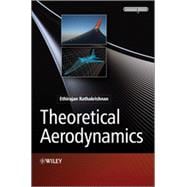This book is intended for graduate and advanced undergraduate students of Aerospace Engineering, as well as researchers and Designers working in the area of aerofoil and blade design.
- Provides a complete overview of the technical terms, vortex theory, lifting line theory, and numerical methods
- Presented in an easy-to-read style making full use of figures and illustrations to enhance understanding, and moves well simpler to more advanced topics
- Includes a complete section on fluid mechanics and thermodynamics, essential background topics to the theory of aerodynamics
- Blends the mathematical and physical concepts of design and performance aspects of lifting surfaces, and introduces the reader to the thin aerofoil theory, panel method, and finite aerofoil theory
- Includes a Solutions Manual for end-of-chapter exercises, and Lecture slides on the book's Companion Website








